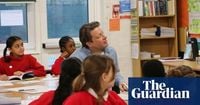At 50, Jamie Oliver has publicly revealed a diagnosis that sheds new light on his lifelong struggles: dyslexia. In his compelling new Channel 4 documentary, Jamie’s Dyslexia Revolution, the celebrity chef, author, and activist opens up about how this learning difficulty has shaped his life, career, and his impassioned campaign for educational reform.
Dyslexia, a common learning difficulty affecting reading, writing, spelling, and processing, impacts roughly 10% of the UK population—around 6.3 million people, according to the British Dyslexia Association. Yet, despite its prevalence, many dyslexic individuals remain undiagnosed or misunderstood, often facing stigma and inadequate support, especially in schools.
Oliver’s story is a vivid illustration of these challenges. As a child, he was placed in special needs classes for five years and struggled profoundly with reading. “I really struggled to read in primary school,” he recalls candidly in the documentary. Remarkably, he read his first book at the age of 33, underscoring how deeply dyslexia affected his early life. His school days were marked by feelings of alienation and low self-esteem. “When I left school, it was, ‘good riddance to you,’” he says, reflecting on the lack of books, constant corrections, and the crushing sense of failure that pervaded his education.
Despite these obstacles, Oliver has built an extraordinary career, authoring over 20 cookbooks and becoming a household name. Yet, the impact of dyslexia persists. “My inner voice isn’t as confident when I’m reading,” he admits. “My eyes aren’t really tracking well. I’m used to it. Some days are better than others.” His dyslexia also contributed to significant financial difficulties, including the 2019 closure of 22 out of 25 of his UK restaurants, which led to 1,000 job losses overnight. He believes his learning difficulty played a part in the challenges of managing accounts and business operations.
Oliver’s personal journey mirrors that of many others, including Georgina Fuller, a journalist who was diagnosed with dyslexia at 46. Fuller shares how dyslexia affected her schooling—struggling with handwriting, reversing letters and numbers, and taking years to master telling time. Like Oliver, she developed coping strategies but often felt “worthless, stupid and thick.” Fuller’s son, diagnosed with dyslexia, autism, and sensory processing disorder, further highlighted the pervasive impact of neurodiversity within families. Fuller’s experience underscores the broader challenges dyslexic adults face, from managing finances to battling ‘time debt’—the sensation of always being behind and needing extra hours to complete tasks.
The documentary also highlights the wider societal implications of dyslexia. Oliver confronts Education Secretary Bridget Phillipson, advocating for a revolution in how schools support neurodivergent children. “Our young people deserve better,” he declares. “We want truly inclusive schools where every child can thrive. That change is a long time overdue.”
Oliver’s crusade is fueled not only by his own experiences but by the stories of others. Celebrity friends like Holly Willoughby and Jamie Laing share their struggles with dyslexia. Willoughby recounts how her self-esteem suffered due to poor spelling test results marked in red pen, while Laing recalls frequent detentions caused by frustration stemming from his difficulties with writing and spelling. These testimonies reveal a common thread of misunderstanding and insufficient support within the education system.
One of the documentary’s most sobering revelations comes from Albert McEyeson, CEO of Action Youth Boxing Intervention. He informs Oliver that nearly half of the UK prison population may be dyslexic. “If you’re dyslexic, you’re three and a half times more likely to get expelled from school,” McEyeson explains. “And if you don’t find anything else you’re good at, you turn to criminality. These may be good kids but, because of their dyslexia, they are being treated badly. They have anxiety and they can’t cope with their environment.” This stark reality underscores the systemic failure to accommodate neurodiverse learners and the dire consequences of neglect.
Oliver himself speaks poignantly about the stigma he endured. Being pulled out of class for special needs came with a “dunce’s hat” tag, embedding feelings of inadequacy and shame from an early age. Yet, he found solace and confidence in cooking, which “saved” him and became a creative outlet beyond the constraints of traditional schooling.
The documentary doesn’t just expose problems; it demands change. Oliver calls for better teacher training, inclusive curricula, and a reevaluation of how success is measured in schools. He stresses that the current system is not only broken but harmful, contributing to anxiety, exclusion, and lost potential among dyslexic children.
For Fuller, receiving a late diagnosis brought relief and self-compassion after years of self-blame. She reflects on how dyslexia has also been a source of strength, fueling creativity, intuition, and motivation throughout her journalism career. This perspective aligns with research showing that many successful leaders—including Richard Branson and Steve Jobs—attribute their achievements to the unique ways dyslexic brains think.
Oliver’s documentary and Fuller’s account both highlight the urgent need to raise awareness, improve diagnosis, and create environments where neurodivergent individuals can thrive. As Oliver says, “Our young people deserve better.” The call for a dyslexia revolution is not just about education reform—it’s about recognizing and valuing diverse minds and ensuring no one is left behind because of how their brain works.


